Are you getting ready to sell your house in the St. Louis area? Let’s discuss some of the top home repairs you’ll want to consider.
In this guide, you’ll learn:
- Should you make repairs to sell your St. Louis home?
- Major repairs you can’t ignore
- Minor repairs to consider
- Aesthetic fixes to sell your home fast
- How to 10x your curb appeal
- What if you want to make no repairs?
- What to expect when selling your house these days
A home in good shape can help the home-selling process go smoothly. It also helps your house sell faster at a higher price.
If your house has chipped paint, sticking doors, and issues that show up during a home inspection, it can cause the sale to fall through.
Should You Make Repairs Before Selling?
First, ask yourself: Do you want to sell fast or for the most money?
If selling for the most money is a priority, we really recommend making repairs so your home is as move-in-ready as possible. Start with the major items and work your way down to the minor things.
If selling quickly is more important than selling for the most money, it might not be realistic to complete all the repairs. In that case, you might want to consider selling as-is for a discounted price.
A new job, a change within the family, and life emergencies could sway your decision.
Take a good look at your timeline and resources before you commit to anything.
How much time and money are you willing to spend to make your home market-ready?
There’s no right or wrong answer.
Repairs vs. Upgrades
Not all home improvements are equal. Let’s take a look at the difference between an upgrade and a repair.
Repairs are usually small tasks that preserve the market value of your home.
Repairs may include:
- Fixing plumbing or electrical issues
- Repairing damaged walls or flooring
- Replacing worn carpet
- Replacing broken fixtures
- Addressing structural damage
Repairs are essential for maintaining the structural integrity and overall appeal of your home.
They are also necessary to pass inspections and satisfy buyer expectations.
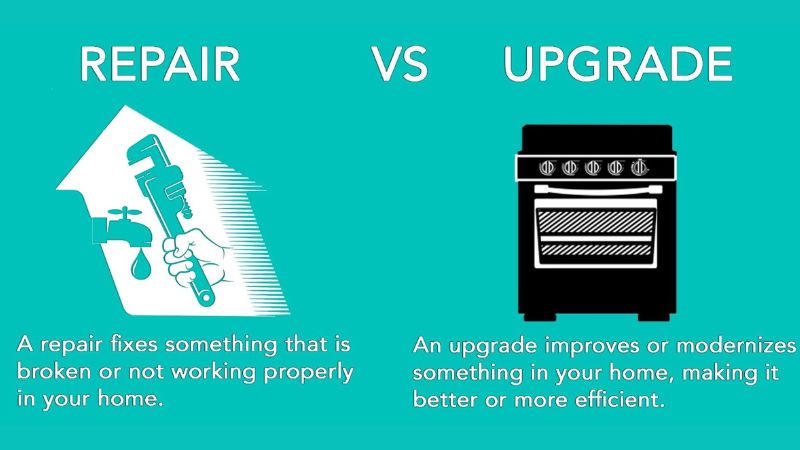
Upgrades go a step further than repairs by enhancing your home’s features and boosting its value.
Here are some examples of upgrades:
- Installing new appliances
- Upgrading countertops
- Adding a deck or patio
- Re-doing a bathroom
Upgrades can be a great way to increase the value of your home, but they’re not always necessary. Repairs are important to ensure a smooth selling experience for you and your potential buyer, but upgrades come down to personal preference.
Upgrade WAY Before You Plan on Selling
Thinking about gutting your kitchen? Maybe you want to renovate that upstairs bathroom?
Our clients often ask whether it’s a good idea to upgrade.
We recommend doing upgrades well in advance before you plan on selling. That way, you and your family have plenty of time to enjoy that new kitchen, bathroom, or deck.
It’s not always a good idea to upgrade your home just to sell it.
That’ll add pressure to get a specific sale price in order to recoup the investment, which doesn’t always happen.
Should You Get a Pre-listing Inspection?
Getting a pre-listing inspection is never a bad idea. This kind of inspection is done solely for your benefit as the seller.
Buyers will typically get their own inspections regardless.
Getting an inspection done before doing repairs can help you identify and prioritize your projects.
It will also minimize surprises when the buyer does an inspection.
Pre-Listing Inspection Disclosure
What if you find major issues during the pre-listing process?
The downside is that you are legally required to disclose any known material defects to the buyer in the Seller’s Disclosure Statement. When we say material defects, we mean an issue that is significant enough to sway someone’s purchasing decision.
Note: Disclosure is only required for known problems. For example, if you’re selling an inherited home or a rental property you’ve never lived in, you’re not required to disclose problems you don’t know about.
And you may still find surprises when the buyers are under contract because they’ll likely use a different inspector. Each inspector does things a little differently.
If you need help deciding whether you should get a pre-sale inspection, ask us! We have great referrals for our clients who choose to go this route.
If you’d like to find your own home inspector, you can find one on the St. Louis ASHI website.
Major Repairs You Can’t Ignore
Some repairs, if left unchecked, can raise major red flags during a buyer’s inspection.
Here are the major repairs we’ll cover today:
These problems are big enough to cause delays in selling and lead buyers to walk away from the sale.
And they can be expensive to fix.
Repair costs can add up, so you’ll want to prioritize and plan ahead. Don’t forget about other closing costs not related to repairs, like title fees.
A good practice is to imagine yourself as a homebuyer.
What issues would be significant enough to make you walk away from a house?
Some repairs, like electrical and foundation issues, are absolutely necessary to keep the house livable.
Minor repairs, like leaky faucets, chipped paint, and scratched walls, are more about convenience, so buyers don’t need to worry about it.
Water Damage
Water damage can cause structural issues, mold growth, wood warping, and electrical problems.
It’s important to address any water damage before putting your house on the market.
Common causes of water damage include:
- Burst pipes
- Broken appliances
- A leaky roof
- Cracked foundation
- Poorly sealed windows
- Damage from a natural disaster
How do I know if I have water damage?
Sometimes, water damage can be difficult to spot. Mold and mildew are easy indicators and will cause a musty smell.
Discolored or peeling paint or wallpaper
The corners of the ceiling are a good place to look if you aren’t sure, but leaks can happen anywhere. Look for brown or yellowish spots.
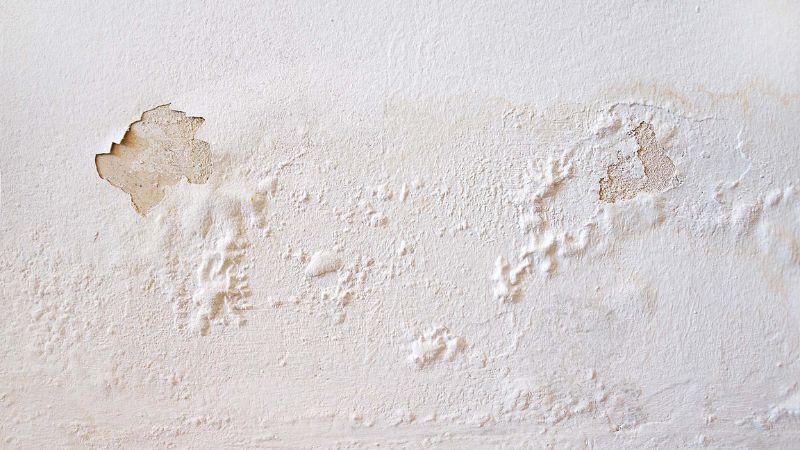
Discolored or warped flooring
The carpet will look discolored, the wood flooring will warp, and the tiles will come loose.
Cracks in the foundation
If there are foundation cracks, touch the wall after it rains to see if it’s wet.
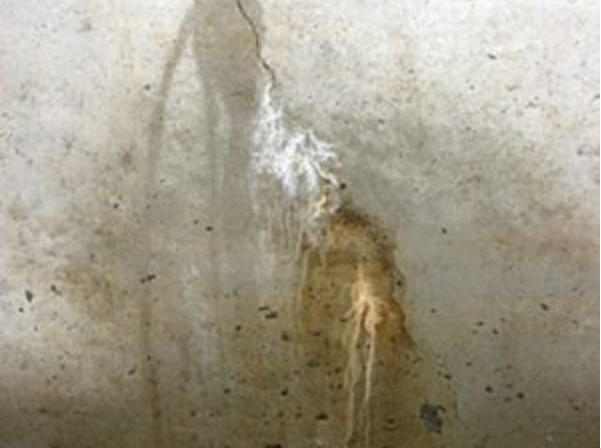
Find a Professional
Many older homes in St. Louis have damp basements where water will get in when it rains. The good news is that because it’s so common, plenty of professionals handle basement waterproofing and foundation repair.
Rust on the pipes
You won’t be able to access every pipe, but if there is a leak or discoloration, the pipe might have a leak.
How do I fix water damage?
The first thing you want to do is stop the leak.
That can involve repairing a pipe, replacing a warped o-ring, or making more extensive repairs, such as repairing a foundation or buying a new roof.
If it’s something simple like a warped o-ring in a faucet and you feel confident in your abilities, you can repair the leak yourself.
Once you stop the leak, you’ll want to:
- Repair what was damaged
- Clean and disinfect to prevent mold
- Make sure everything is dry and stays dry
With bigger, more complicated projects, you’ll want to hire a professional and get bids on the work needed.
Ask your real estate agent to recommend someone who is reputable and has a fair price. Get a few bids before making a decision.
If the damage is foundation or roof-related, you’ll want to have a professional handle it to ensure the integrity and safety of your home. When you get major repairs, most companies provide a warranty, which is a great selling point for buyers.
Some companies give a lifetime warranty. That’s even better.
If mold is involved and that musty smell has been around for a while consider professional mold remediation. This involves sealing off the area for a few days to a week, so you’ll want to plan for it.
CHECK YOUR HOME INSURANCE POLICY TO SEE IF IT COVERS WATER DAMAGE
Make sure your insurance policy covers the type of damage that occurred. If you’re unsure, contact your insurance provider.
HVAC Problems
When it comes to your HVAC, you should be good to go as long as the airflow is good, the system maintains the set temperature, and there are no strange noises or smells.
However, if you are experiencing any of those issues, you should address them before putting your home on the market.
Have you done routine maintenance on your HVAC? This can include changing the filter, cleaning the units, and having a company service them. Following the recommended maintenance schedule is a good way to avoid surprises when you’re under contract.
HVAC: Replace or Repair?
If you’re having HVAC problems, should you repair or replace it?
Replacing the HVAC system can be expensive, so you’ll need to ensure a return on investment.
For units older than ten years, replacing them with energy-efficient models can be a significant selling point for prospective buyers.
If the house is old and likely to undergo major renovations after closing, it’s best to leave the HVAC replacement to the new buyer.
You may want to consider being upfront and offering a closing credit to the buyer. Or a home warranty that would cover the HVAC if it were to go out.
If your HVAC unit is under ten years old, consider repairing it. Have a professional come out and look at it. This will give you a good idea of the condition it’s in.
The HVAC company can perform repairs, offer advice, and give their stamp of approval, which will give you peace of mind that everything is in order.
Electrical Issues
The most important thing with electrical issues is to make sure there are no code violations.
Since a permit is required for any electrical work and homeowners must pass a test to obtain the permit, hiring a professional is usually the best option for most sellers.
How do I know if I have electrical issues?
If your house was built in the last 30 years and you’ve never had issues with outlets not working, flickering lights, or frequently overloading the breaker, you most likely don’t need electrical repairs.
If you have an older home, you’ll want to check a few things.
Check your panel.
If your home was built between the 1950s and 1980s and has Zinsco/Sylvania GTE or Federal Pacific labels, you should call an electrician to replace your panel.
For more info on these panels, check out this article.
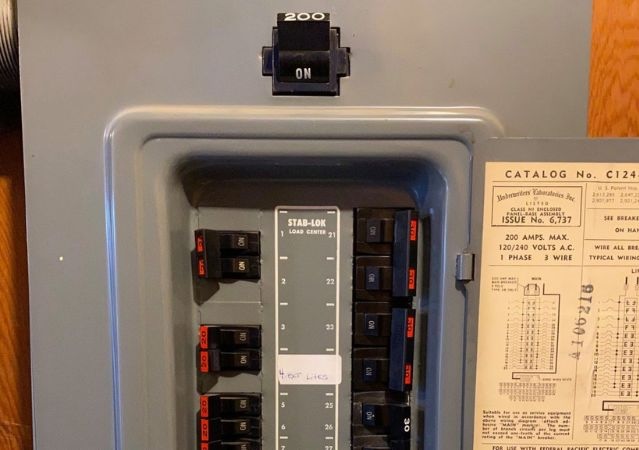
In St. Louis, some homes still have the remnants of knob and tube wiring, which was popular from 1880-1930. The remnants are fine, but you’ll want to call an electrician if you find anything still carrying a current.
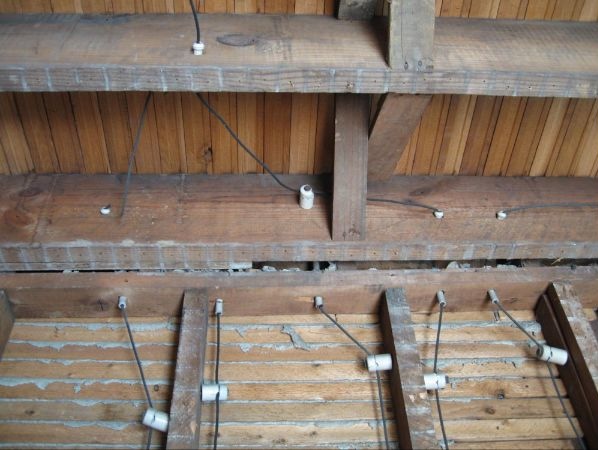
Make sure all of your outlets work, and make sure electrical systems are up to code.
Roof and Gutter Problems
“I can’t wait to replace my roof!”
Said nobody ever.
Replacing a roof is expensive and doesn’t always add value to your home.
But a roof in poor condition can jeopardize the sale, and you may want to replace it. A damaged, warped, or leaking roof can deter buyers, especially first-time home buyers.
Mortgage lenders have strict inspection requirements if the buyer uses a VA or FHA loan. A faulty roof could prevent the financing of the home sale, so it’s crucial to ensure your roof is in good condition.
Insurance Claims for Storm Damage
If your roof needs to be repaired or replaced due to storm damage like hail, you may be able to get insurance to pay for some (or all) of the replacement cost.
We see a lot of homes around St. Louis that get hit with hail, and insurance usually steps in to help cover the cost.
Roof Repairs
If a replacement isn’t necessary, you may want to make repairs to your roof. Check for missing or broken tiles, shingles, or ridge gaps.
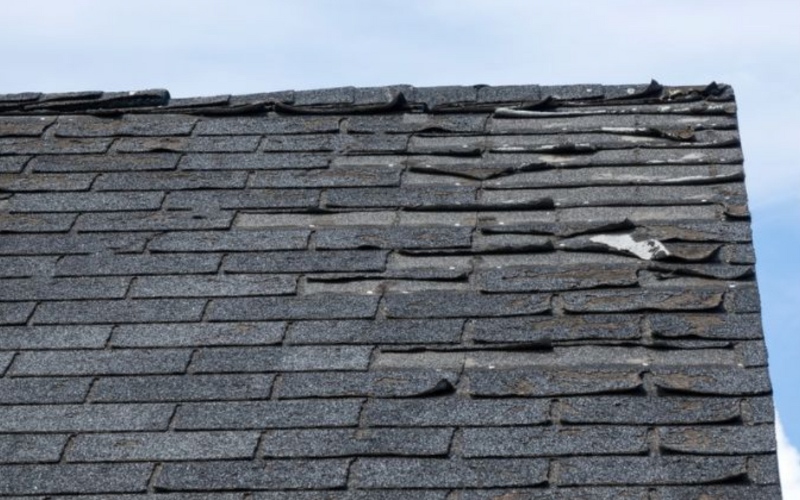
If you see any signs of a leak (e.g., a discolored ceiling or water getting in when it rains), the underlayment may be damaged. Call a professional roofer.
Check the eaves and the areas around them, which are the edges of the roof that overhang the exterior walls.
Everything should be free of rot and water damage. If the paint is peeling off any of the areas around the eaves or gutters, touch it up with a fresh coat of paint to protect the wood.
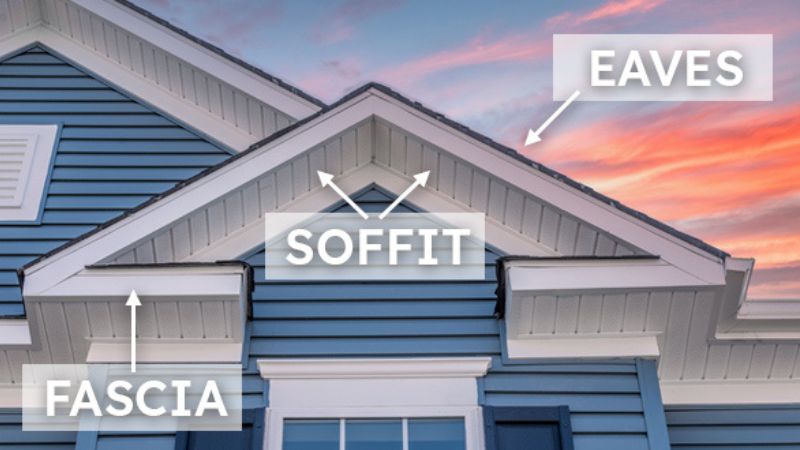
Speaking of gutters, make sure they are free of debris.
Check the drainage around your home.
Water should flow away from the house to prevent foundation issues. Ensure the downspouts direct water away from the foundation.
It doesn’t hurt to walk around your property and make sure everything is connected and nothing is hanging loose.
Foundation Issues
Foundation issues can be alarming, and if they show up during an inspection, some buyers may walk away.
Foundation problems can also complicate a buyer’s financing.
It’s best to address foundation issues before putting your house on the market.
How do I know if I have foundation issues?
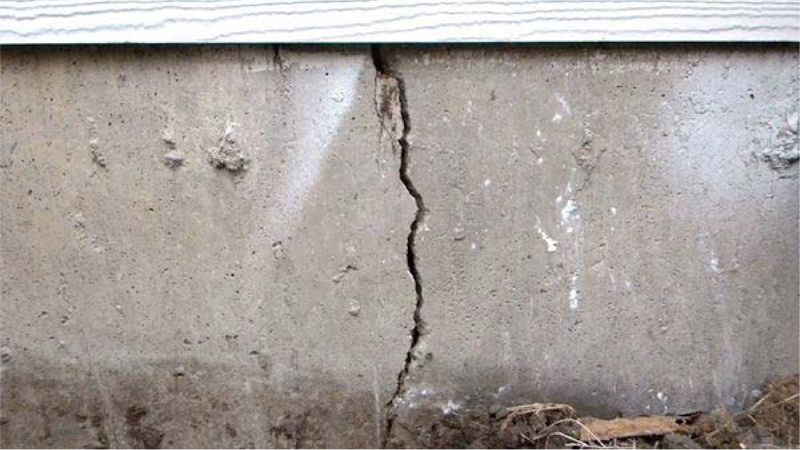
Common signs of foundation issues are:
- Cracks in floor, walls, doors and windows
- A musty smell or regular flooding in the basement
- Bowed basement walls
- Gaps between the crown molding and the ceiling
- A sloped floor
If you notice any signs of foundation issues, contact a professional to inspect your home. They can provide repair options.
If repairs are out of your budget, you can give buyers an inspection report with the findings.
This transparency helps buyers feel they aren’t being taken advantage of.
It also fulfills your legal obligation to disclose issues with the home. Addressing the problem beforehand can also ease your mind, preventing buyers from using the issue as leverage during negotiations.
Deck Repairs
If you have a deck, make sure it’s in good condition before selling. A deck that is damaged, rotted, or structurally unsound can be a turn-off for buyers.
Deck problems can be an issue during VA and FHA appraisals. Depending on the issue, you may need to fix it so that the buyers can close on your house.
Even if the buyer isn’t using VA or FHA, decks can be a safety hazard if they aren’t in proper condition.
These issues can be code violations depending on the municipality you live in.
Here are the most common deck problems:
- Weak posts
- Broken deck boards
- Termite damage
- Improper fastening
- Rotted wood
- Peeling paint
- Lack of railing
Pests
Infestations of any kind can cause problems and make a house appear dirty.
Termites destroy support structures like joists or trusses, while rodents chew through electrical wiring. Both can become serious issues.
Some issues are easy to spot. Others can be harder to detect.
Signs of rodents or bats:
- Droppings, especially in areas where there’s food
- Scratching sounds in the walls or ceiling
- Gnawed edges on food bags, walls, or floors
If you have a rodent infestation, you need to find out how they’re getting in.
If you hear scratching in the ceiling, inspect the exterior of your home for holes or gaps, especially around the foundation. Seal off any entry points to prevent more rodents from getting in.
Make sure all your food is stored in airtight containers.
If you know you have pests, call a professional pest control service. Some companies offer live capture and release.
You can also buy traps from your local hardware store and handle them yourself. Monitor your progress by checking for new droppings or chewed bags.
If you have bats, it’s important to know that many species are federally protected. Relocating them requires a licensed professional, and it can be pretty expensive.
Once the infestation is under control, you’ll want to repair any damage they caused.
Termites are especially off-putting to potential home buyers because of the damage they cause. It can be difficult to see a termite infestation until it’s too late, so you’ll want to pay close attention to the signs.
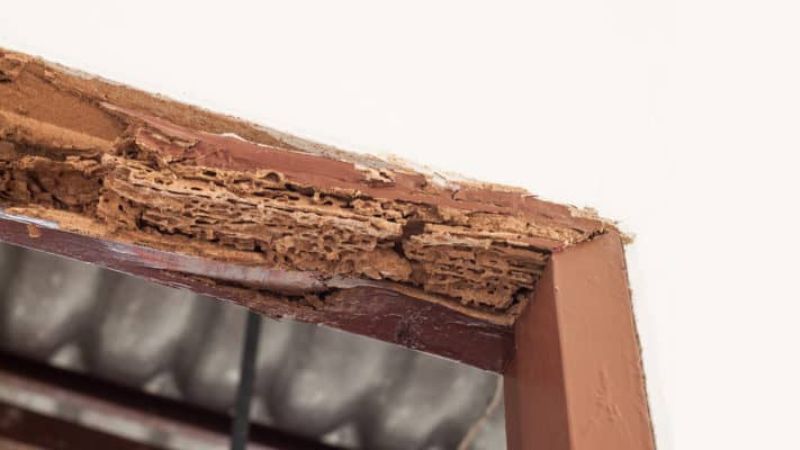
Signs of termites:
- Discolored or drooping drywall
- Peeling paint that looks like water damage
- Buckling wood floors
- Crumbling, damaged wood
- Maze-like patterns in wood
- Termite pellets, which resemble small piles of coffee grounds.
If you suspect termites, call a professional. Once the issue is taken care of, make sure to repair any damage.
Minor Repairs That Wouldn’t Hurt You
Now that we’ve covered the big repairs let’s discuss the little ones.
Lots of minor repairs can be handled with time, elbow grease, and a screwdriver. If you don’t have the time or energy, have your handyman take care of them.
If you do have the time and resources to complete minor repairs, it’s a great way to maximize your profit.
Sometimes, it even helps to sell over the list price. Homebuyers prefer a move-in-ready home and are willing to pay top dollar for it.
Walls and Ceilings
Make sure the walls and ceiling are free from holes and dents. Smaller holes and dents can be repaired with a simple spackle and paint job.
Large holes may require mesh.
Paint
After you do any necessary repairs to the walls and ceilings, you’ll want to paint.
In addition to completing the repair, putting in a fresh coat of paint is one of the best ways to refresh a home. If you’re using a different color, pick something neutral.
You can paint yourself, but if you are short on time, consider hiring a professional painter.
When you work with us, we can point you in the right direction if you need help finding someone.
We give referrals to our clients for the best contractors and painters all the time. We have a vetted list of vendors we give to clients all the time.
Faucets
Make sure all faucets are in good working order and leak-free! A leaky faucet is usually easy to fix for DIY enthusiasts with a few easy steps. Check out this article for tips on diagnosing and repairing a leaky faucet.
If you don’t have time to handle it, a plumber or handyman can help.
Windows and Doors
Make sure your windows are in good condition. Check to see that they open and close easily, stay up when opened, and keep the weather out.
Check the window seals and repair them if necessary.
Broken seals are a very common issue that shows up on inspection reports.
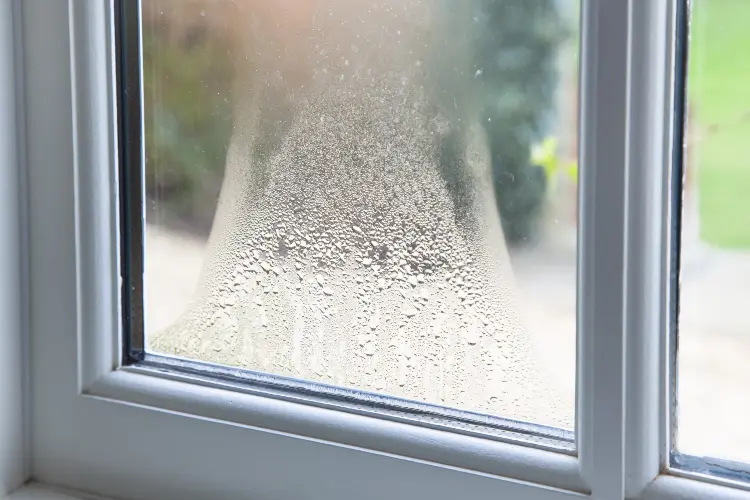
When this happens, the window glass isn’t broken; it still functions as a window. Instead, it’s no longer insulating because the seal between the panes has broken, and the gas has escaped.
Outdated Appliances and Fixtures
On one hand, new, energy-efficient appliances can be very appealing to buyers.
On the other hand, some buyers may prefer to choose their own appliances.
We recommend replacing old appliances if your home is being marketed to first-time buyers.
First-time buyers often want a move-in ready house and may be using FHA loans or VA loans, which have stricter requirements. For example, not having an operating oven could prevent financing from going through.
If you don’t have the budget for new appliances and the current ones are outdated or non-functional, consider selling the house at a discounted price.
If your appliances are more than 10-12 years old, you could also offer a credit towards new appliances. You could also offer a home warranty to put buyers at ease, knowing they’re covered if an appliance goes out.
Determine how old your appliances are and if they work properly. Then decide whether it’s a good idea to buy new ones.
If you’re unsure, ask us!
You don’t need to get fancy if you’re getting new appliances, but stainless steel seems to be the standard today.
At a minimum, make sure your appliances are squeaky clean and working properly if you don’t replace them.
Aesthetic Fixes For a Quick Sale
If you don’t want to make major or minor repairs to your home, consider aesthetic fixes.
The general rule for a quick sale is to remove your personal touch.
Buyers want to envision themselves living there, and that bright blue kitchen with southwest decor can make that difficult.
Lighting Fixtures
If your fixtures look dated or overly stylish, replace them with plain, energy-efficient options. Ensure the new light fixtures evenly light the room.
Use soft white bulbs to ensure everything looks bright and well-lit without being harsh. Avoid daylight bulbs, as they can be too harsh.
Remember the outdoor lighting fixtures! Make sure everything is well-lit and clean.
Door Knobs and Cabinet Handles
Make sure door knobs and hinges match. For example, don’t have silver hinges with gold knobs.

Light Switches and Outlet Covers
Here is a cost-effective way to make your house look more put together: Paint all light switches and outlet covers white.
Simple. Effective. And it makes your house look well put-together.
Wall Colors
If you are painting walls, keep it neutral and light.
Painting is an easy way to refresh a room. Ideally, you’ll want to paint all of the rooms the same color so they flow together and appear larger.
If any kid’s rooms are painted bright colors like blue, pink, or yellow, consider re-painting with a neutral tone.
Sherwin-Williams has a list of the top 50 colors. We typically recommend light, neutral colors in the white, gray, or tan families.

Maximize Your Landscaping and Curb Appeal
The exterior of your home is just as, if not more, important when selling. It’s the first impression you have on the buyer, so make it count!

Buyers often start their search online and then drive by the properties they’re interested in.
You don’t want to turn off potential buyers before they have a chance to walk through the front door.
Pressure wash the exterior: Spray the siding, window trim, and gutters. Be sure to hit the driveway and sidewalks for a good first impression.
Painting: Consider repainting the exterior if it has dents, chips, or looks dingy or faded. Paint the front door. According to Zillow, mid-tone brown is by far the best front door color.
Fence repair: If you have a fence, make sure it’s in good repair. Pressure wash and paint if necessary.
House Numbers: Make sure house numbers are visible and easy to read. If they’re not, consider replacing them.
Landscaping: Keep the lawn mowed and the bushes trimmed. A well-manicured lawn gives the home a welcoming feel for potential home buyers.
Add flowers to the porch. Keep extras on hand in case some of them wilt.
Add a welcome mat. Small details can make all the difference.
Clean Your Home Before Selling
Clean, clean, and clean again!
While a clean home gives the impression of a well-kept home, a dirty house looks poorly maintained. If you are short on time, consider hiring professional cleaners.
Carpets: If your carpets are (mostly) clean and in good condition, give them a deep clean. You can rent a carpet cleaner from your local hardware store. If they are permanently stained, replace them.
Wipe down everything: Clean every shelf (counters, cabinets, and pantry), baseboards, trim, and inside of drawers. Ensure that every surface in your home is spotless.
Light covers and vents: Make sure light covers and vents are clean and dust-free.
Bathtubs, sinks, and showers: Make sure they are spotless. Be sure to check the caulk to make sure it’s not peeling anywhere or stained with mold. If it is, pull it up and recaulk the seams. Mold-stained caulk gives the impression that the area is dirty.
Declutter and Depersonalize
Remove personal items like family photos and unique decor that may not appeal to everyone.
While these items hold sentimental value, they can make it difficult for buyers to imagine themselves living in the space.
Too many personal items can be a distraction that prevents buyers from imagining themselves in the space.

Consider renting a storage unit while your current home is on the market.
A storage unit can help declutter your home and create a more spacious and inviting environment for potential buyers. Storing excess items off-site can make it easier to keep your home clean during the selling process.
What If You Don’t Want to Fix Anything?
Selling as-is is one option if you’d rather not make repairs. There’s no guarantee your home will sell quickly, and buyers may expect a discounted price.
Home-buying companies looking for investment properties typically buy as-is houses, fix them up, and either sell them at a profit or rent them out. House flippers do this, too.

In St. Louis, you’ll see a lot of cash-for-keys companies with signs that advertise things like:
- “We buy houses”
- “Sell my house fast”
- “We buy ugly houses”
This happens frequently when older St. Louis houses are in disrepair. If that sounds like you, selling your house as-is could be a good option.
Since house-buying companies and cash buyers need to make a profit on the flip, there’s not always room for negotiation. In exchange for a fast sale, you don’t always get a fair offer.
On the upside, selling your house to an investor means you won’t spend money or time on repairs.
If you sell as-is for cash, you’ll also save time by avoiding the wait for buyers’ financing approvals and the back-and-forth negotiations in the traditional home-buying process.
Selling to a cash buyer is a good way to avoid realtor commissions, too. Just remember the sale price is discounted by more than 2-3%, which is a common listing agent commission rate.
If you decide to go the as-is route, make sure you’re dealing with one of the more reputable cash home buyers to get a fair cash offer.
Do some research, ask around, and read reviews online.
Important Market Statistics in St. Louis, MO
Last year, the St. Louis market experienced some changes due to higher mortgage rates and fewer homes for sale.
But here’s the good news: home prices went up!
If you’re considering selling your home, now could be a great time. Even though there were fewer homes sold, the market stayed strong.
And while fewer homes were on the market, there were still plenty to choose from.
Overall, last year’s local market in St. Louis had ups and downs, but there are still lots of opportunities for you to do well.
What You Can Expect When Selling Your Home in St. Louis
St. Louis is in a seller’s market. This means there are more buyers than sellers, so sellers have more negotiation power.
Inventory is an estimate of how long it would take for all the homes currently listed to sell.
As the real estate market shifts every month, so does inventory.
Right now, a low inventory means homes are selling fast.

Let’s take a look at the average days on the market and the average percentage of the listing price received.
St. Louis City, MO
- Single-family homes averaged 42 days on the market, and home sellers got 97.9% of their asking price.
- Townhouses and condos averaged 70 days on the market, and sellers got 97.2% of their list price.
- The median number of showings in St. Louis City was 10 before a home went pending.
St. Louis County, MO
- Single-family homes averaged 37 days on the market and home sellers got 99.4% of their asking price.
- Townhouses and condos averaged 30 days on the market, and sellers got 99.1% of their list price.
- The median number of showings in St. Louis County was 11 before a home went pending.
St. Charles County, MO
- Single-family homes averaged 35 days on the market, and home sellers got 100.6% of their asking price.
- Townhouses and condos averaged 28 days on the market, and sellers got 100.2% of their list price.
- The median number of showings in St. Charles County was 10 before a home went pending.
Data source: MARIS housing report
Getting Ready to Sell Your Home?
If you want to sell your home, we’re here to help!
At Gateway Realty Group, we provide unparalleled assistance to our clients in the Greater St. Louis Area. If you’re in the market to sell your home, please get in touch with us.
We’re here to help you sell for the most money in less time with no hassle.





